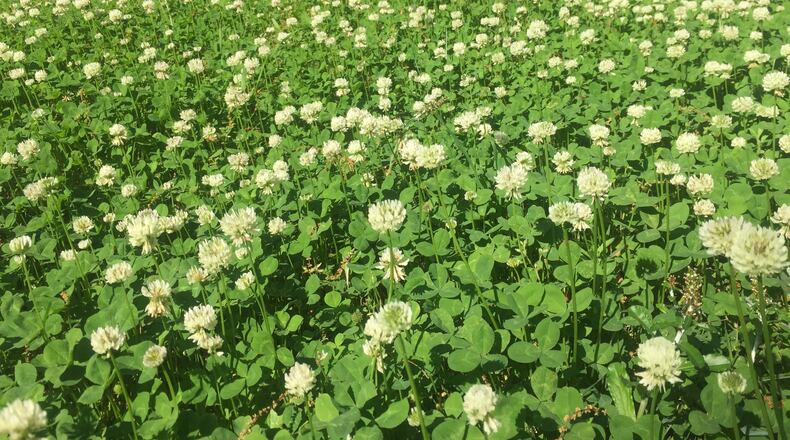Q: I remember watching honeybees and rolling in fields of white clover as a child. We have a big backyard, where I'd like a native wildflower pasture. What are your recommendations? Nita Paris, Acworth
A: Don't forget that our commonplace white clover, red clover, and hop clover are not native plants. They came to us from Europe, as did honeybees. A wildflower meadow is beautiful to visualize but hard to accomplish in Georgia. Our climate welcomes lots of plants one would not consider "pretty." To keep a wildflower area looking good, you have to be an expert at identifying weed seedlings and constantly pulling them out. Some wildflowers grow more vigorously than others, so they become "weeds" to control. Others bloom for only a short time, requiring a wide mixture of perennial and annual flowers in a sustained wildflower meadow. I recommend you start small. An area of 500 square feet seems reasonable to use as your learning laboratory. I have recommended plants at bit.ly/GAwild.
Q: I have three huge red tip photinia trees. I have been dealing with leaf spot for two years. This year almost every photinia in our neighborhood has been affected. Am I fighting a losing battle? Or should I replace with 'Little Gem' magnolia and tea olive? Clark Connelly, Marietta
A: The battle against photinia leaf spot is not an easy fight to win. The disease loves damp weather, which we've had plenty of this spring. With so many other diseased shrubs in the neighborhood, there's plenty of infectious material around. Do you enjoy fighting? Think about how you'll feel 10 years down the road if the situation has not improved. Your choice of magnolia and tea olive is good but also consider other large hollies plus 'Bigfoot' cleyera.
Q: We planted a new fescue lawn that is partially under an ancient oak tree. Is it okay to use a weed and feed under the tree? David Dozier, Atlanta
A: The label on most weed and feed products designed to kill actively growing weeds instructs the user to avoid application under trees. Your best course is to give the grass excellent management so it crowds out weeds naturally. If the area under the tree is very shady, no grass can compete with shade-tolerant weeds. In that case, occasional spot spraying with a ready-to-use weed-control product would be best. Or you could simply pull weeds as they appear.
Q: Oxalis is taking over our creeping jenny ground cover. I've tried pulling it out but we have so much of it and it is difficult to separate the two. Is there anything that will kill the clover but keep the creeping jenny? Elizabeth McNeill, Cobb County
A: I can't think of a single spray that would remove the oxalis alone. But here's what happens in my landscape: I have lots of oxalis in a bed of ajuga ground cover. The three-leaved oxalis covers the ajuga every year in late May. But in mid-June, oxalis rust disease attacks the oxalis leaves! They fade away and the ajuga thrives once again. It's interesting how nature works sometimes!
About the Author
The Latest
Featured

